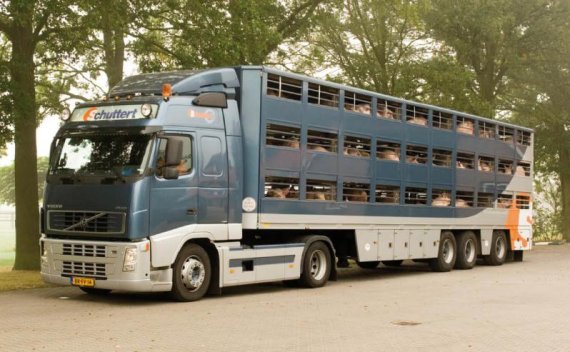The many hours pigs usually spend in transit from the farm to the abattoir are no picnic. Marien Gerritzen of Livestock Research monitored the welfare of pigs being transported across Germany from the Danish border to Berlin. A drive of 550 kilometres in about 8 hours during which the researcher kept track of the body temperature, pulse, blood values and behaviour of the pigs. Half of the pigs were in transport that met EU norms: two pigs per square metre. The other half had more space, with approximately one and a half pigs per square metre.
Gerritzen noticed that the pigs with more space were quicker to lie down in the truck. ‘For the first few hours the pigs stand up, because they are anxious. Those that are less crowded lie down after three hours; those that are more crowded only do so after four hours, when the truck stops for a break. I think that the pigs in more crowded trucks do want to lie down but cannot because it is too full. That is a sign of compromised welfare.’
But a more important welfare issue for both groups of pigs, in Gerritzen’s view, emerged during the break after four hours of driving. Then the driver has lunch and the pigs are on the car park without any ventilation. ‘Then both the temperature in the truck and the pulse of the pigs soon go up.’ For this reason Gerritzen thinks there should be a climate control system for the pig transport trucks. ‘Transport companies could opt for a climate control system if they want to call themselves animal welfare-friendly transporters.’ Gerritzen did his research for the Dutch ministry of Economic Affairs and published his results this month in the scientific journal Animal.

